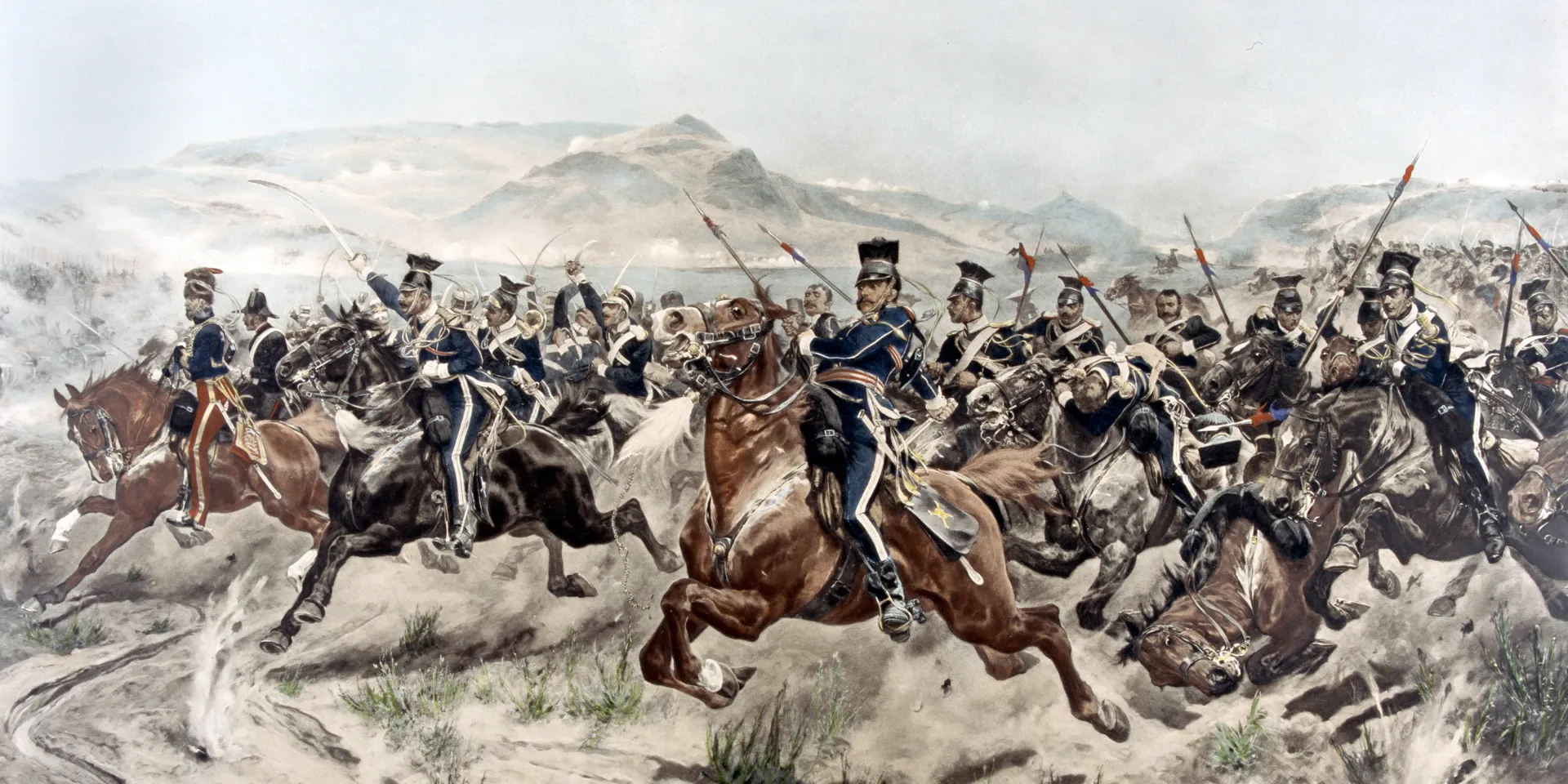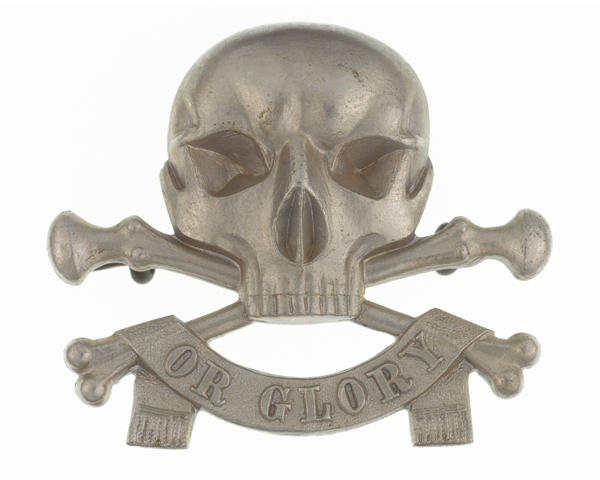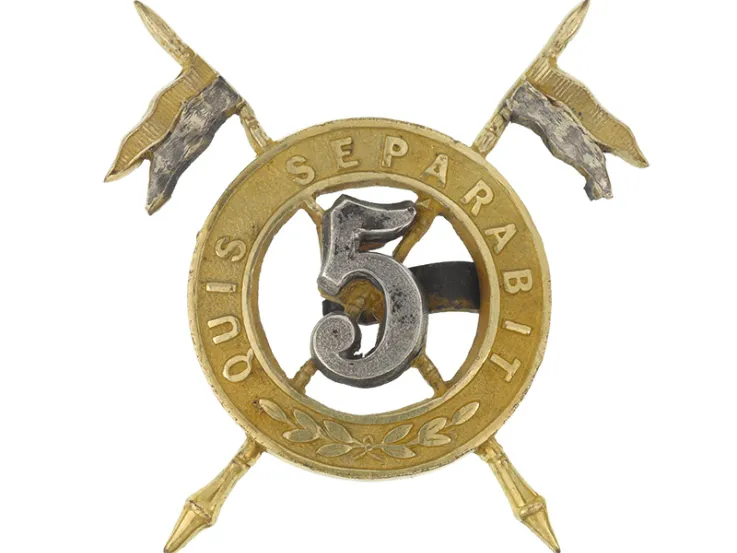Origins
In 1759, Colonel Hale of the 47th Foot was sent back to Britain with the news of General James Wolfe’s death at the Battle of Quebec. As a reward, he was commissioned to raise the 18th Light Dragoons.
In memory of Wolfe’s demise, the regiment's cap badge was a skull and crossbones, and its motto ‘Death or Glory’. In 1763, it was re-numbered 17th in the order of precedence.
Early deployments
Its first overseas service came when a detachment of the unit was sent to Germany during the Seven Years War (1756-63).
The whole regiment then deployed to the American War of Independence (1775-83), fighting at Bunker Hill (1775), Long Island (1776), White Plains (1776) and Crooked Billet (1778). Later, it was the only regular unit in Tarleton’s Legion in the southern colonies, where it served at the Battle of Cowpens (1781), but was interned after being captured at Yorktown (1781).
The 17th served in Ireland, England and the West Indies during the French Revolutionary Wars (1793-1802), helping to take Santo Domingo (1796) in the Caribbean.
In 1806, it was sent to assist an attempt to capture the Spanish colony of Buenos Aires, which proved unsuccessful. After moving to garrison Cape Colony, it then sailed to India in 1808. During its time there, it fought in the Third Maratha War (1817-18).
The unit finally returned to Britain in 1823, finding out en route that the Army had converted it into a lancer regiment.
Quiz
Which of the following was a nickname of the 17th Lancers?
In the 1790s, the regiment was given the nickname ‘Horse Marines’ after some of its troops served in the Caribbean on board HMS ‘Success’.
Victorian wars
The regiment spent the next 30 years on garrison duty in Britain and Ireland. In 1854, it was sent to the Crimean War (1854-56), taking part in the Battle of Alma (1854), the Charge of the Light Brigade at Balaklava (1854) and the Siege of Sevastopol (1854-55).
Three years later, it was sent to India as reinforcements during the Mutiny (1857-59). It took part in the final operations of that campaign, before returning home in 1865.
The Duke of Cambridge, one of Queen Victoria’s cousins, became the regiment's colonel-in-chief in 1876. It also took on his name, becoming the 17th (The Duke of Cambridge's Own) Lancers.
The regiment’s next overseas service was at Ulundi in the Zulu War (1879), where it carried out a decisive charge against the retreating enemy.
Following a further 20 years of imperial and home garrison duties, it moved to the Boer War (1899-1902) in 1900, fighting in several engagements including the Battle of Modderfontein (1901).
First World War
The regiment deployed to the Western Front with the 1st Indian Cavalry Division in October 1914, serving in the trenches at Festubert (1915) and on the Somme (1916). It only resumed mounted duties at Cambrai in 1917. During the German Spring Offensive in 1918, it served as mobile infantry, helping to plug gaps in the line.
From 1919, it spent two years serving in the Irish War of Independence (1919-21), before returning to England in 1921.
Legacy
In 1922, the regiment was merged with the 21st (Empress of India’s) Lancers to form the 17th/21st Lancers.
Regimental museums
The National Army Museum works with a network of Regimental and Corps Museums across the UK to help preserve and share the history and traditions of the Army and its soldiers.
Discover more about the 17th (The Duke of Cambridge’s Own) Lancers by visiting the Royal Lancers and Nottinghamshire Yeomanry Museum at Thoresby Park, Nottinghamshire.













